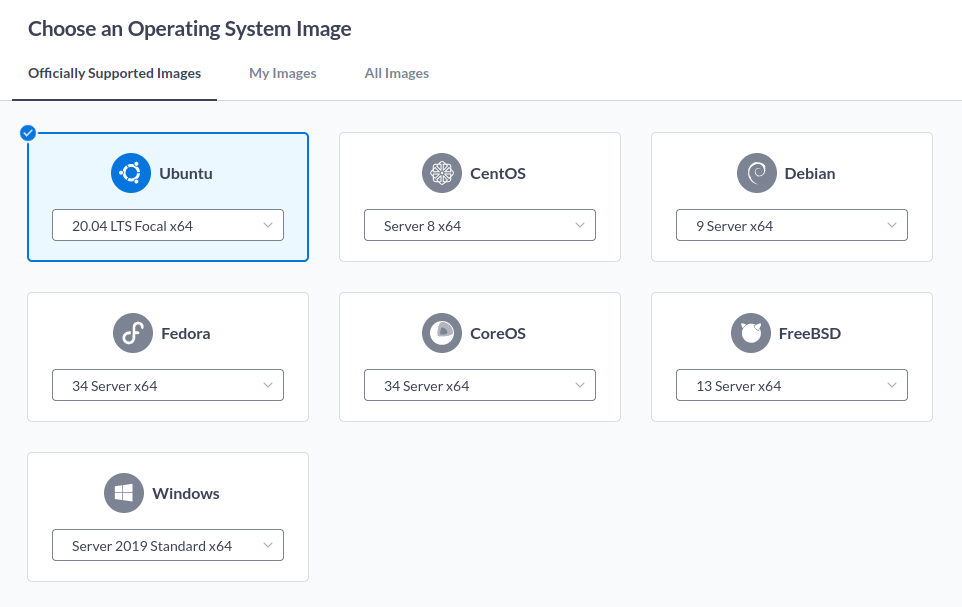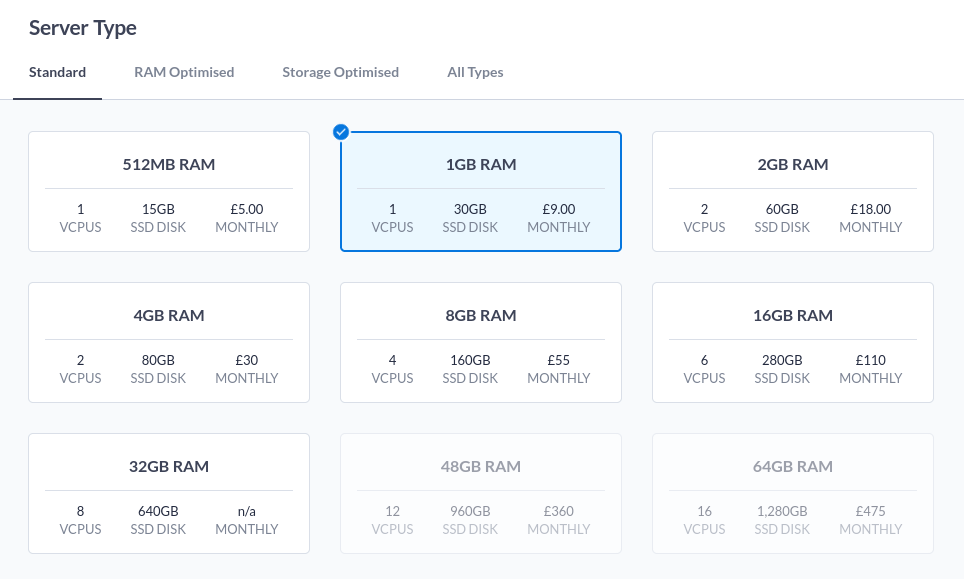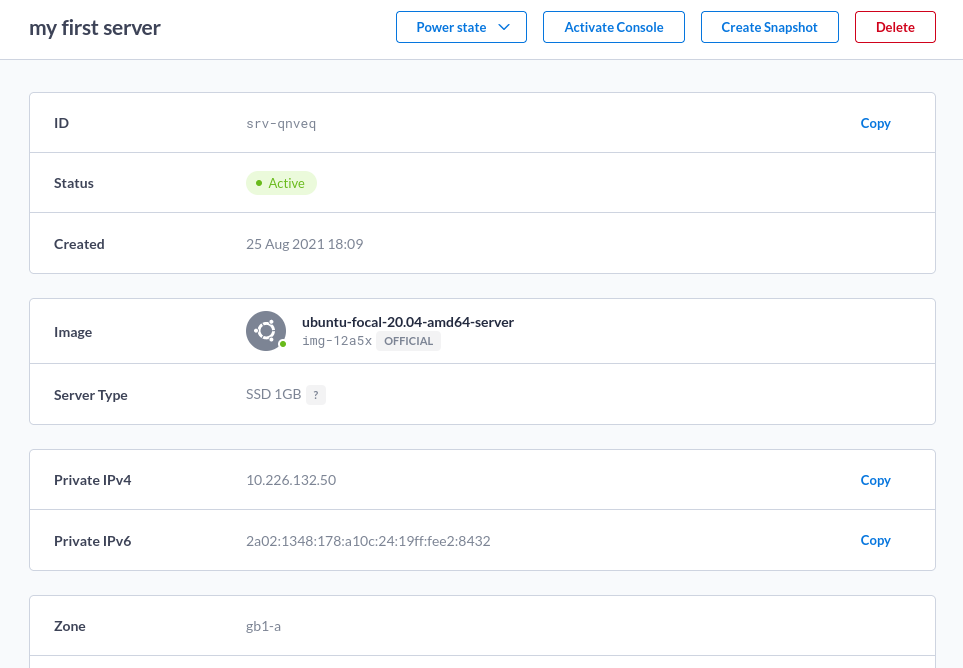Getting Started with the Control Panel
The Control Panel is a browser-based graphical user interface for managing Brightbox resources.
It’s accessible at https://cloud.brightbox.com. You’ll need to have an active Brightbox account to login.
This guide will take you through building and accessing your first Cloud Server.
Once you’ve logged into, you’re presented with the dashboard which gives an overview of your account.
Setting an SSH key
Most of our officially supported Cloud Server OS images use cloud-init to install SSH keys on first boot to enable secure password-less access to Cloud Servers.
If you haven’t already added an SSH key you’ll need to set one now before you build any servers.
Building a Cloud Server
Click Cloud Servers
in the sidebar on the left and click the Create Cloud Server
button.
Choose an Operating System
Choose an operating system image to be installed onto your new server. I’ve selected an official 64bit Ubuntu 20.04 image here:

Server Type
Now select your server specifcations by choosing a server type you’d like. Here I’ve selected a Standard 1GB RAM type. The monthly price is displayed, but servers are actually charged by the hour. The pricing page has the hourly rates. There are a few categories of server type that might be useful depending on your requirements.

Cloud IP Address
Cloud Servers come with a private IPv4 address and a public IPv6 address, but you need to map a Cloud IP address to access it over the public IPv4 internet.
So, click Add New Cloud IP
and a new IP will be allocated to your account and auto-selected in the list for you.

Server Groups
Server Groups let you group your Cloud Servers together for various purposes, including firewalling. The default group comes with a default firewall policy that allows SSH, HTTP and HTTPS. You can add your server to a new groups and change firewall rules whenever you like, so just go with the default group for now.

Advanced settings
There are several advanced settings you can manage here, but for this guide we’ll just accept the defaults.
Name and create it
You can now option give your server a handy name so you can refer to it later (you can change this at any time so don’t worry too much).
Now click Create Cloud Server
and your new server will begin building. This usually takes about 30 seconds and the status will update automatically when it’s ready.

As you can see here, we’ve built one new server and it’s been given the unique identifier srv-qnveq.
Your server is now active
At this point your server is active and you can connect directly to it with SSH using it’s DNS name public.srv-qnveq.gb1.brightbox.com. Our official Ubuntu images are pre-installed with a user named ubuntu. You can use sudo to get root access:
$ ssh -l ubuntu public.srv-qnveq.gb1.brightbox.com
Welcome to Ubuntu 20.04.3 LTS (GNU/Linux 5.4.0-81-generic x86_64)
ubuntu@srv-qnveq:~$ uptime
17:12:09 up 1 min, 1 user, load average: 0.19, 0.12, 0.05Would you like to know more?
Here you used our Control Panel to create an Ubuntu server with a public Cloud IP.
You might also want to learn more about accessing cloud servers or perhaps Cloud IPs. There are plenty of other guides available too.
Or perhaps you’d prefer to use our command line interface to manage your Brightbox resources?